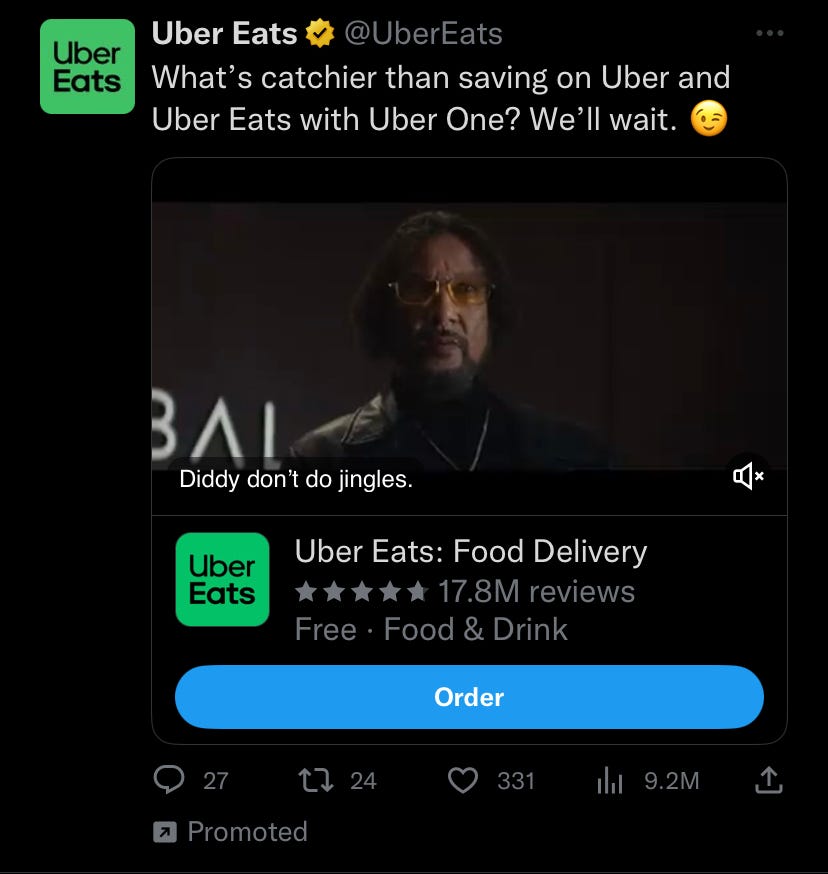[Dive #174] A Tale of 2 QR Codes Pt. 1: Limit Break
PLUS: 🦸♀️ Explaining blockchains using superheroes: Take 2
Did anyone notice that my last piece mentioned “Explaining blockchains using Superheroes” and that I never mentioned it? 🤦♂️
I was deep in the brand valuation rabbithole and forgot to include that bit, so we’ll start off with that today.
A couple weeks ago I came across a great Twitter thread that explained blockchains using superheroes by Alex Valaitis. Check out the Twitter thread, it’s great.


This is a great way to explain new concepts to new audiences! The power of educating and explaining through analogies and commonly understood concepts is helpful for newbies and fun for veterans.
Whether it’s my piece explaining the Ethereum Merge using a nightclub as an example, or Dr. Amit Sahai explaining zero-knowledge proofs to a child, these are the types of explanations that work and result in ‘a-ha’ moments.
IMO, the ability for a broader audience to comprehend what the hell is going on is worth the small technical accuracy tradeoff. We need more of this.
Eventually, we’ll get to a point where people care less about how things work under the hood, but more about the fact that it just works.
We’ll get there, one superhero thread at a time.
A tale of 2 QR codes Part 1
Over the past week I came across two web3-related efforts that involved QR codes. One is obvious, but I have a different take on it. You guys know I wouldn’t write about a popular topic otherwise 😉
Limit Break’s Super Bowl Ad
Limit Break, a web3 gaming company, was the lone advertiser and representative for crypto/web3 at this year’s Super Bowl.
Web3 fans were eagerly anticipating the commercial, as it was announced months ago, and it involved a live free mint mechanic.
Before you all brand me as a Limit Break apologist, let me be clear. From an overall marketing POV, the ad was terrible on multiple fronts. And if you missed it, here it is:
QR code scanning has become an action that is well understood at this point, as well as a simpler way for viewers to interact with an ad. Coinbase’s 2022 Super Bowl featured a QR code that stole the show.
What went wrong?
It was a bad ad
No story.
No mention of what the product is.
No context (by now, you know I love context lol).
Literally the opposite of what a good TV ad should look like.
There were only 4,000 mints available
There were 113 million people watching the Super Bowl on Sunday. Regardless of how many people cared enough to scan the QR code, the 4k supply of these Dragon Eggs were gone in minutes.
The collection is 10k with 1k airdropped through a giveaway and the other 5k reserved for future giveaways and activations.
Almost everyone that minted was already in web3
Punk9059 shared analysis around the wallets that minted. Let’s just say Limit Break didn’t exactly onboard many (if any) new users to web3.


Part of the reason for this is because in order to mint the Dragon Egg, users had to connect their wallet to the site. Ya…pretty sure nobody new was onboarded.
When minted out, the mint page redirected to the CEO’s Twitter page
If you were lucky enough to mint, the page looked like this:
For those late to the party, the page looked like this:
…and then redirected people to this:
This was probably the point that bothered those in web3 the most. Many thought it confusing and distasteful to drive users to follow Gabe’s (the CEO) Twitter account.

Oh yeah, I almost forgot to mention that the ad spot cost $6.5 million.
Again, terrible ad. But what if we flip the question and ask:
What went right?
Technical execution
Gabe wrote a brief Twitter thread after the Super Bowl celebrating the success of the ad. From a consumer POV, there was little to celebrate. Gabe underscores an important point though:

If you were one of the lucky 4,000, it was flawless.
VentureBeat came out with an article the next day that provided some more insight to the execution. These points stuck out to me:
To be fair, the quote is vague in what the ‘millions’ were, but the point is they were able to support a high volume of inbound traffic without any hitches.
From a contract standpoint, Limit Break minted and airdropped the 4k NFTs in 3 minutes in batches of 500.
TLDR?
Also, whatever this proprietary tech is may eventually become open sourced for the broader industry. Or it may become licensed tech that will provide another revenue stream for the company, we’ll see 🤷🏻♂️
Making the most of those that couldn’t mint
Gabe and the Limit Break team knew that the NFTs would be minted out in seconds. What do they do with all the people that scanned and missed the mint?
They auto-redirected the traffic to Gabe’s Twitter account with the follow intent prompt.
Distasteful? Yes.
Effective? Somewhat, yes.
Another version of this is entering a giveaway sweepstakes and providing your e-mail to qualify. Similar thing here, but with Twitter and on US television’s biggest stage.
And that’s about it in terms of what went right. What gets fun is…
What could be next?
This is where I things get interesting. What has been imprinted in our heads is this abrasive, distasteful, and confusing ad.
However, that’s where Limit Break’s marketing campaign begins, not where it ends.
From what I understand, there will be more to come with the gaming company’s advertising efforts.
I’ve already thought of how the marketing campaign may roll out, and I believe Gabe’s quote at the end of the VentureBeat article confirms what I’m thinking.
If Gabe and Limit Break figure this out, I think this will be another page in one of many web3 growth playbooks, and it will expand beyond web3 games.
The point of Limit Break’s Super Bowl ad wasn’t to onboard new users to web3. It was to stress test the company’s technical capabilities under one of live TV’s biggest and brightest spotlights.
If they could pass this test with flying colors, it shows what they’ve built is robust.
One ad, multiple lives
Some Super Bowl ads are more of a one-time thing, but many keep playing after the big game.
For example, when I was scrolling on Twitter earlier, I came across the Uber One ad featuring Diddy that aired during the game.
Makes sense, numerous studies have documented that it requires multiple views for an audience to actually take action. On top of that, companies pay 6 to 7 figures to produce these ads, especially if there is celebrity talent is involved. Gotta milk that ad for what it’s worth!
When applying this to the Limit Break ad, it doesn’t make sense. The QR code is effectively exhausted and the ad itself is pointless because it’s basically 30 seconds of ‘Scan Now’.
The magic here is the simplicity of the ad: It’s a QR code with characters attacking a chest.
If the ‘talent’ in the ad is the QR code, it’s infinitely replaceable and updatable.
Limit Break can (I have a hunch they’ll do something along these lines) create hundreds or thousands of ads with different QR codes with the basic premise of ‘scan now’, leading to a free mint of some sort of NFT asset in the Digidaigaku game.
They can run this on primetime commercial breaks, late night local channels, on streaming platforms like Hulu and Netflix, or even put them on bus stops or subway stations.
Depending on where and how it’s aired, the QR code could lead to different minting links with varying supply and additional mechanics. Maybe it will lead to a mini-game that you have to place a high score on, unlocking the mint page.
It’s not about the production quality of the ad, it’s about the QR code and what that leads to.
Ok I get it TPan, so the QR code is the key to this campaign. But how does this onboard people into web3?
“I think it’s a watershed moment for game web3 marketing”
Before I share more details about how this may be a watershed moment for web3 marketing per Gabe’s quote, I want to go to the world of mobile game ads, where Gabe and many on his team cut their teeth.
Several years ago, Playrix, the developer behind the massively popular Homescapes (I’m on level 1970) and Gardenscapes match 3 games ran a different type of ad. Instead of showing the actual gameplay, they advertised the game as a different type of puzzle game. There’s a chance you’ve seen these ads before.
The reality is, these ads are misrepresentative of the actual game.
Despite that, these ads were effective in getting new users to install and play the game, so this became an trend companies emulated and proliferated. It got to a point where the Advertising Standards Authority actually banned Playrix from running more of these.
I don’t condone this but can appreciate it from a growth perspective. After all, Playrix wouldn’t have continued this if it didn’t work.
Why am I bringing this up? The above example is a gimmick.
Limit Break’s Super Bowl ad is a gimmick as well. It’s cringe, it’s cheesy, it’s low quality. And it works.
And this is where the gimmick of a scan to mint QR code starts becoming a big deal.
I’ve already described how the QR code marketing campaign strategy can be proliferated. But how does this onboard new users to web3?
There’s been countless stories of web3 folks sharing how they looked like idiots trying to scan a QR code in front of family and friends. Kmoney hits the nail on the head with his classic skits.
Dumb in the moment, but if Limit Break keeps running the ads, we’ll start seeing more people get curious. To illustrate this with my signature stick figures:
Now imagine the above at a bar, or during next year’s Super Bowl. Imagine if multiple web3 companies incorporated scan to mint mechanics, or if they co-marketed a 1 minute ad with three 20-second scan to mint segments? The concept will be unignorable. Even if you think it’s dumb or aren’t interested, you’re forced to acknowledge it’s a thing.
Regarding the requirement to have a web3 wallet in order to mint, this was done intentionally just like how Dookey Dash was limited to Sewer Pass holders. Limit Break could remove the wallet requirement with solutions like Paper or web3auth for simpler onboarding.
I written about the ‘X to mint’ concept in the past, and I think we have another emerging contender: Scan to mint.
My top concern
Security of course.
If scan to mint becomes a thing, educating and building the right guardrails to protect new users should be a top priority. Those tools already exist today, but need to be part of the conversation.
As onboarding new users gets more creative and effective, the opportunities to scam these new users will be as well.
Again, I don’t know if this is Limit Break’s strategy.
One thing’s for sure though: Don’t judge a web3 company by their Super Bowl ad.
See you Thursday!






















